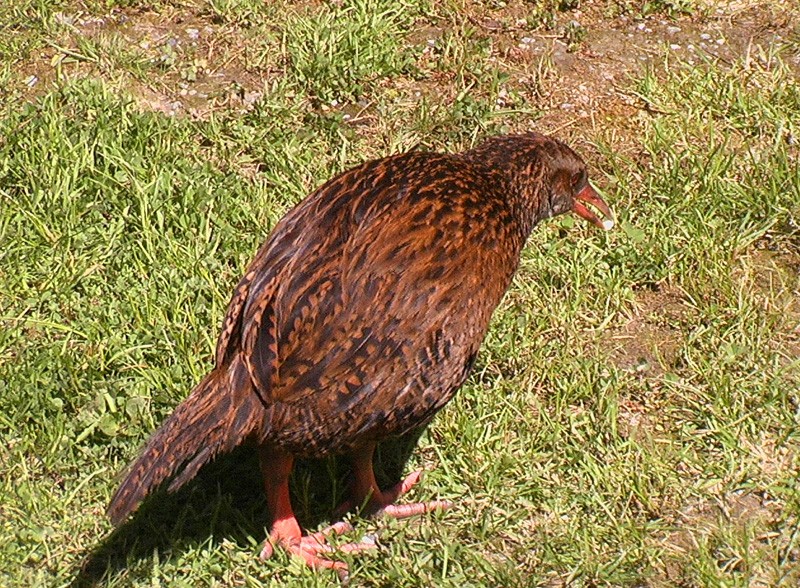Weka
A species of Australasian-pacific Rails Scientific name : Gallirallus australis Genus : Australasian-pacific Rails
Weka, A species of Australasian-pacific Rails
Botanical name: Gallirallus australis
Genus: Australasian-pacific Rails
Content
Description People often ask General Info
Description
The flightless weka is a sturdy bird whose color varies depending on its local habitat, and can be found from different shades of brown to almost fully black. Famously feisty, this bird has been known to come right up to people. It often wields its surprisingly powerful beak like a hammer, to split seeds, announce its presence to a person getting too close, or to break open a tasty egg.
Size
46 - 60 cm
Life Expectancy
18 years
Nest Placement
Ground
Feeding Habits
Weka are omnivorous, eating 30% animal prey—worms, insects, larvae, small vertebrates—and 70% plant matter like leaves and berries. They forage by digging and exhibit unique predation on shearwater young among certain populations.
Habitat
Weka thrive across diverse environments, from dense forests with thick understorey to open sub-alpine grasslands. Their habitats span woodlands, scrublands, and modified areas like semi-urban landscapes, embracing cultivated and coastal regions, up to 1500 meters in elevation. They favor low vegetation for shelter and ease of movement.
Dite type
Omnivorous
People often ask
General Info
Feeding Habits
Bird food type
Distribution Area
The buff weka (Gallirallus australis hectori) formerly inhabited the eastern districts of the South Island but is now confined to Chatham Island and Pitt Island to which it was introduced in the early 1900s, and where they are widely hunted and eaten, being considered 'introduced'. The western weka (Gallirallus australis australis) is found mainly in the northern and western regions of the South Island from Nelson to Fiordland. 
Species Status
Weka are classed as a vulnerable species. The Department of Conservation's weka recovery plan, approved in 1999, aims to improve the conservation status of threatened weka, clarify the status of data deficient weka, maintain the non-threatened status of other weka, and eventually restore all weka to their traditional ranges as a significant component of the ecosystems. Weka are unable to withstand the current pressures faced in both the North Island and South Island. 
